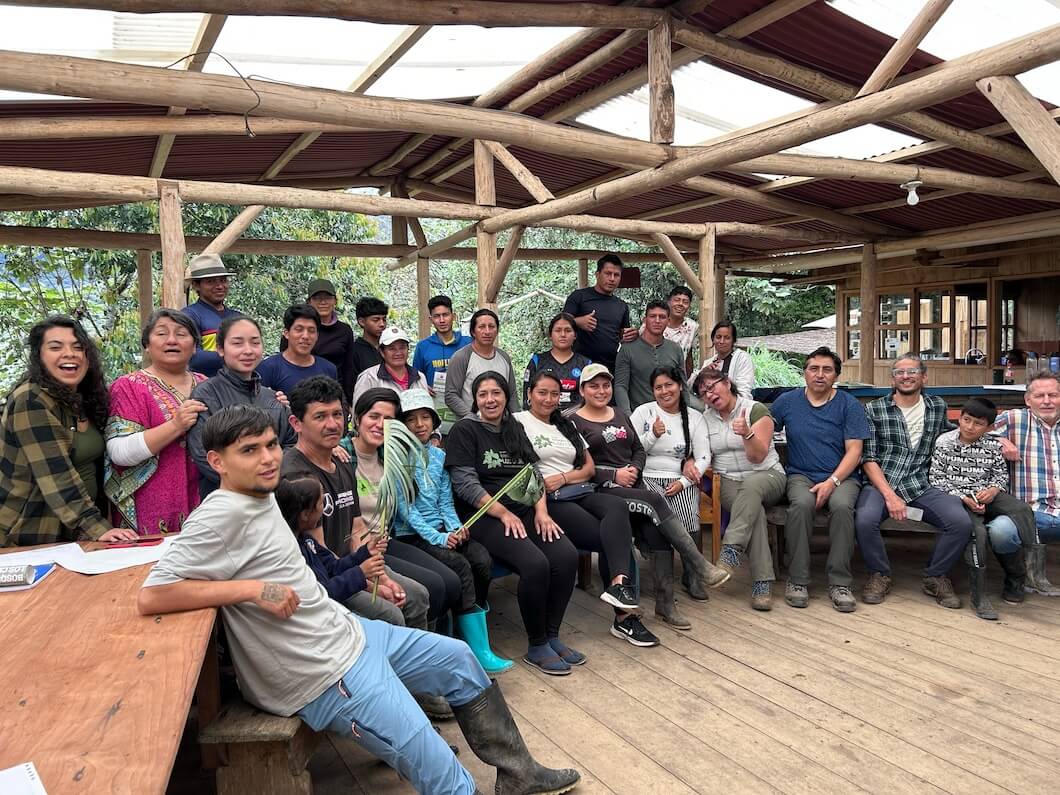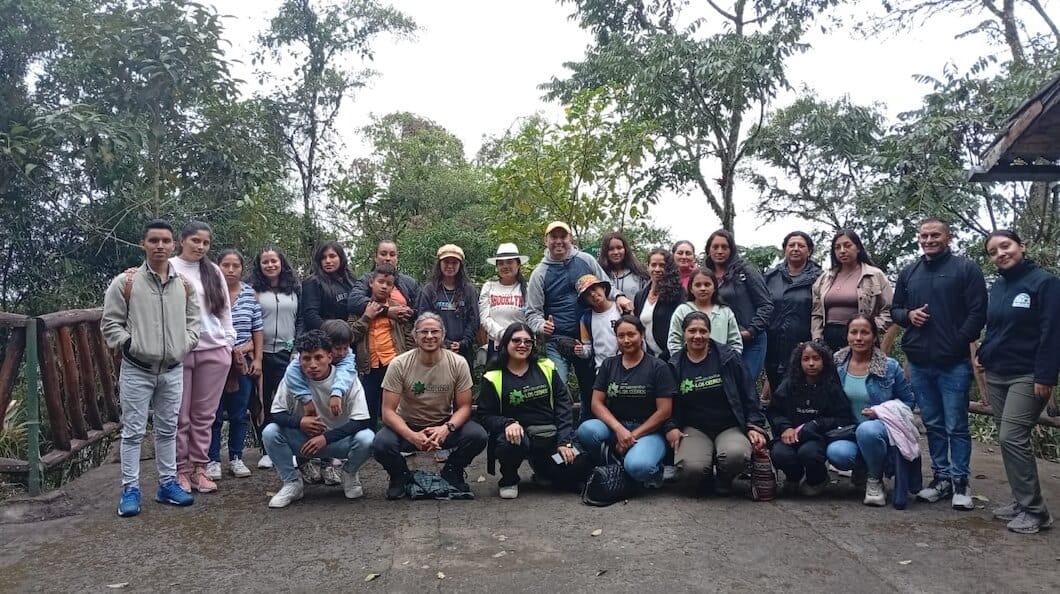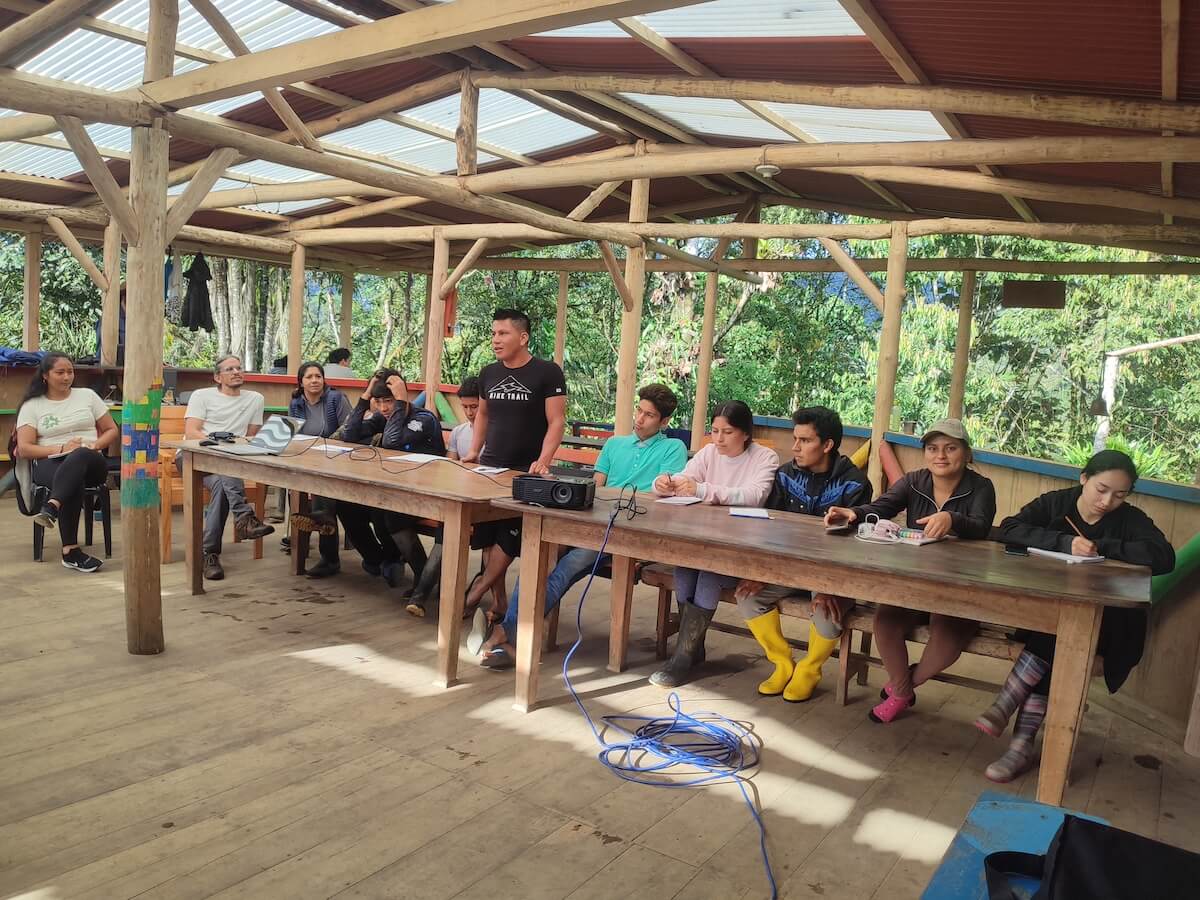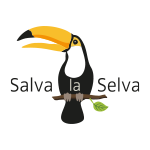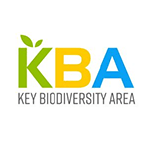by Marian Sofía Morillo
Share
In this post, you’ll find a brief overview of the educational approach that we’ve conceived of, dreamed up, and continue to build on as part of the Environmental Education program carried out in collaboration with schools and educational districts in the Intag area of the Los Manduriacos Valley. A project of the Los Cedros Scientific Station and its managing nonprofit organization, the Corporación para la Investigación y Protección de los Bosques de los Andes Tropicales (CIPBAT).
When visiting the Los Cedros Protected Forest, you’ll note that a banana plantation at the beginning of the trail welcomes you. A steep climb where the heat from an intense morning sun smacks you, your heart begins to pound faster and faster. However, a few meters up, the cloud forest unfurls wide and deep, and it’s not just your eyes that perceive the change. Your entire body feels the shade and coolness that the trees’ dripping leaves provide. This welcome gift from the cloud forest inspires a strength and wonder inside of you that will carry you up the two-hour rise to the Scientific Station.
No need to point out the obvious difference in climatic soils and forest types because the children, adolescents, and teachers with whom we visit Los Cedros in the “Pilot Course on Environmental Education” immediately understand that we have entered the cloud forest. They then recall one of the great ecosystem services we studied in the classroom: climate regulation.
In class, they received this knowledge through playful and interactive educational materials, such as a simulated forest model (pictured below). However, here, enveloped by Los Cedros’s own breath, they learn this knowledge through the body. It is a knowledge connecting their nervous systems—their roots pulsating throughout body, mind, and heart—to the roots breaching and diving back down into the cloud forest’s muddy slopes.
With this environmental education course, we’re developing a popular and community-based three-stage teaching approach for forest conservation and protection: first, we introduce them to Los Cedros by visiting their classroom; then, they introduce themselves to Los Cedros during a field trip to the cloud forest; and finally, they introduce Los Cedros and their new relationship with the cloud forest to their communities in a celebratory open house event.
Stage 1: Introducing Students to Los Cedros in their Classrooms
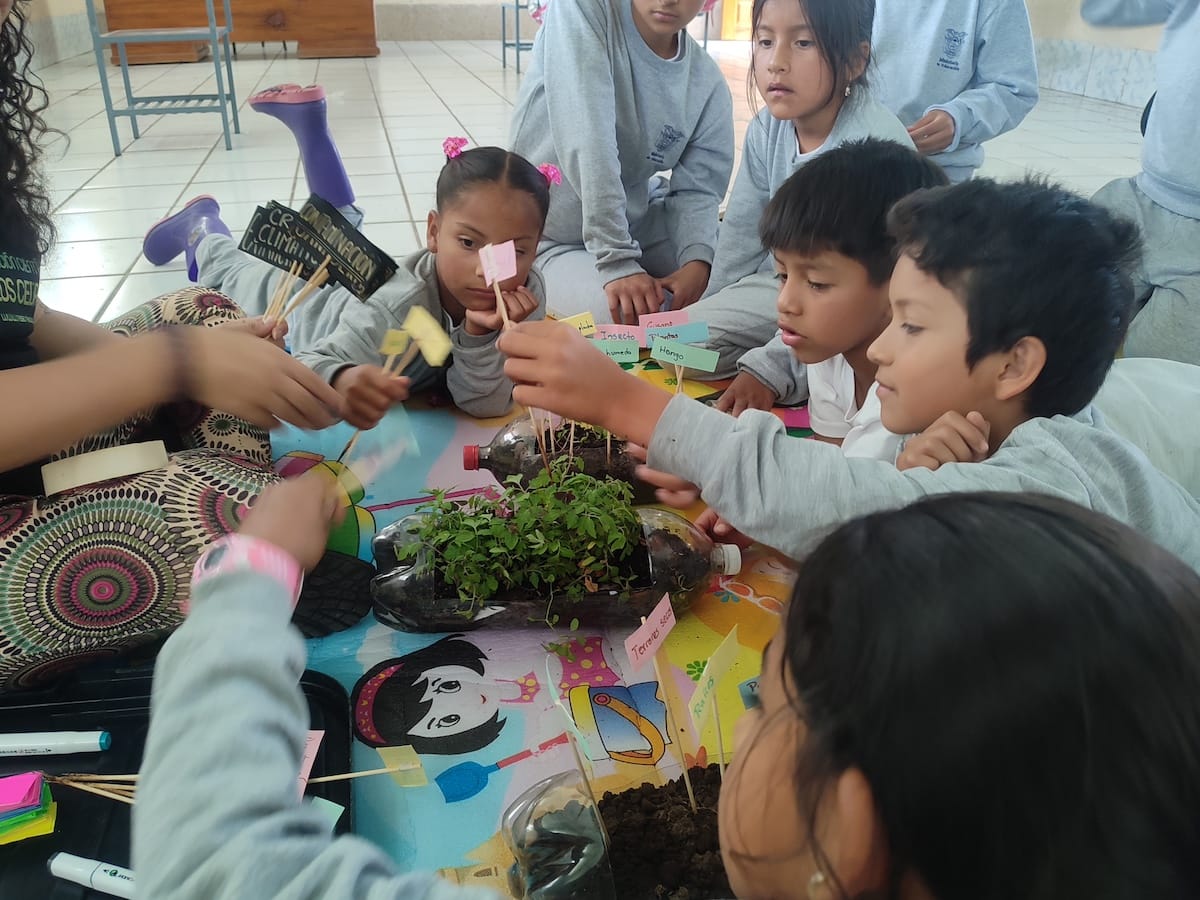
Activity on “Forest Ecosystem Services” with schoolchildren in the Manduriacos Valley.
In the classroom, we engage the students using dynamic and gamified learning activities created by the Theater of the Oppressed, a technique developed by Brazilian Augusto Boal in his theater for actors and non-actors. These ice-breakers open our minds and tune our bodies to a form of learning outside of what we usually expect to receive in class. We also use game-theory informed devices developed by the “Taller de Jugueterìa Artesanal Artilugios Animados” (Toy Workshop of Animated Gadgets), which are designed and built based on “experiential learning.” This approach seeks to use lived experience through specific gamified activities that build on the students’ prior knowledge to generate reflection, interaction with the content, and a return to the game or activity that started the process, now transformed by the experience and the topic.
The educational concept of action-reflection-action stems from pedagogy integrating theory and practice. It’s a go-to model for motivating critical thinking and experiential learning. The action-reflection-action cycle describes a continuous process where practice connects to reflection, generating deep and meaningful learning. This focus not only transmits knowledge but also empowers participants to understand and transform their reality. Herein lies the key to our pedagogy in the making: the ability to transform reality, to change and open minds and hearts—beyond our societal conditioning of equating forest with resource and toward more profound realities and relationships with the cloud forest—of each child, adolescent, teacher, and even accompanying parent who participates in the course.
Stage 2: Students Introducing Themselves to Los Cedros on Field Trips
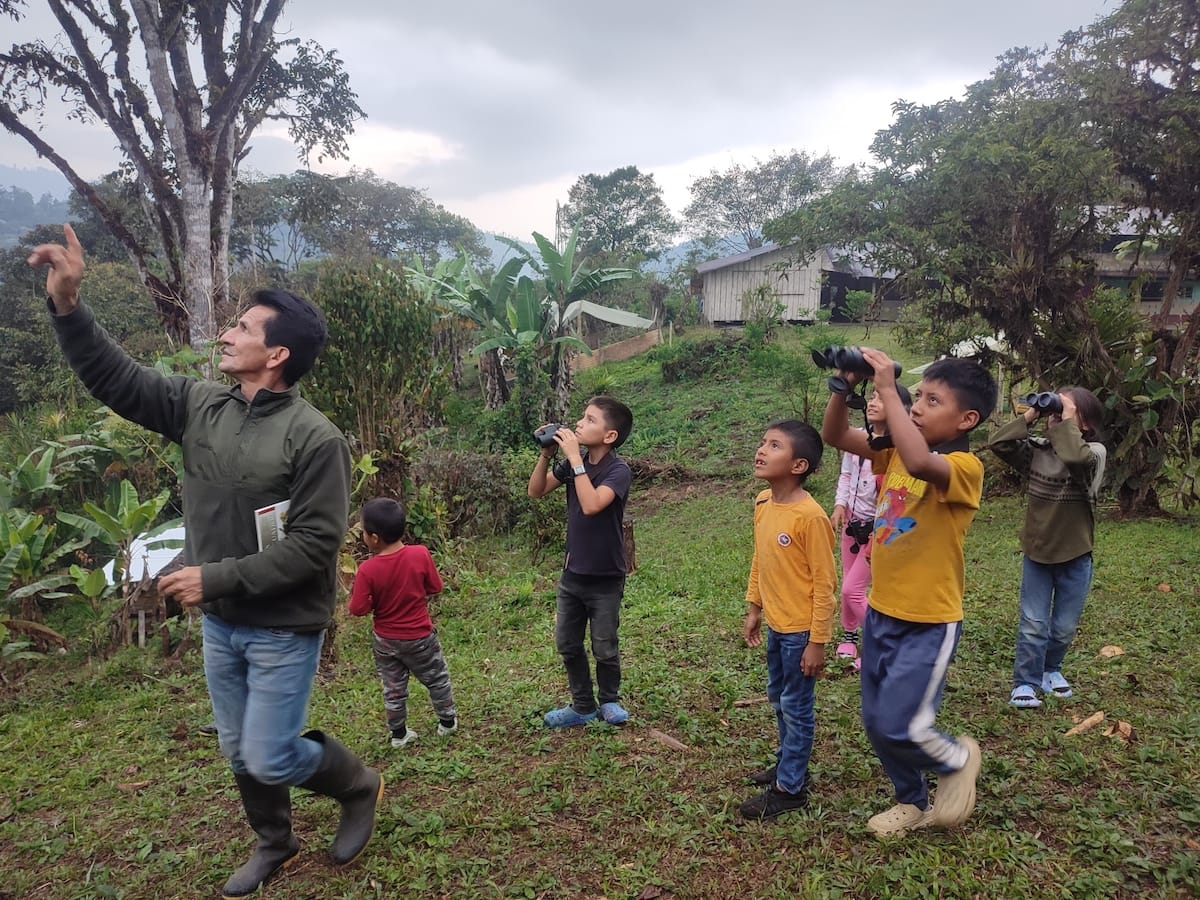
Birdwatching excursion in the Los Cedros Protected Forest with schoolchildren in the Manduriacos Valley.
The field trip brings the learning cycle to its full potential as we immerse ourselves in the cloud forest. Los Cedros embraces us, welcomes us, reveals to us glorious teachings, and at the same time, reinforces everything we learned in class: territory, biodiversity, ecosystem services, forest dynamics, etc. Never underestimate the power of play when it comes to learning. For example, along the hike up from the trailhead to the Scientific Station, we challenge the students with a “Treasure Hunt.” The scavenger hunt game hones the “scientist’s eye” in each student to discover the miraculous worlds of epiphytes, pioneer trees, fungi, birdsong, and so much more. In one thoughtful game, the students learn forest ecology, botany, dendrology, mycology, ornithology, and so on while searching for forest treasures.
Arriving to the Scientific Station, the living key to the whole program is so alive that it reverberates in our bodies and hearts, glows in the eyes of children and teenagers encountering a frog or plunging with shrieks of joy into the river. The Station’s rangers assist the cloud forest as fellow teachers in a living classroom. They respond to questions inspired by walks with the forest, and they also share all they know about the species who, like the students themselves, are vital community members of the cloud forest. Between early morning birdwatching and nighttime frog and bioluminescent mushroom outings, the students participate in talks, walks, and artistic activities. In short, knowledge and lived experience entangle.
Stage 3: Students Introducing Los Cedros to their Communities in a Celebratory Open House
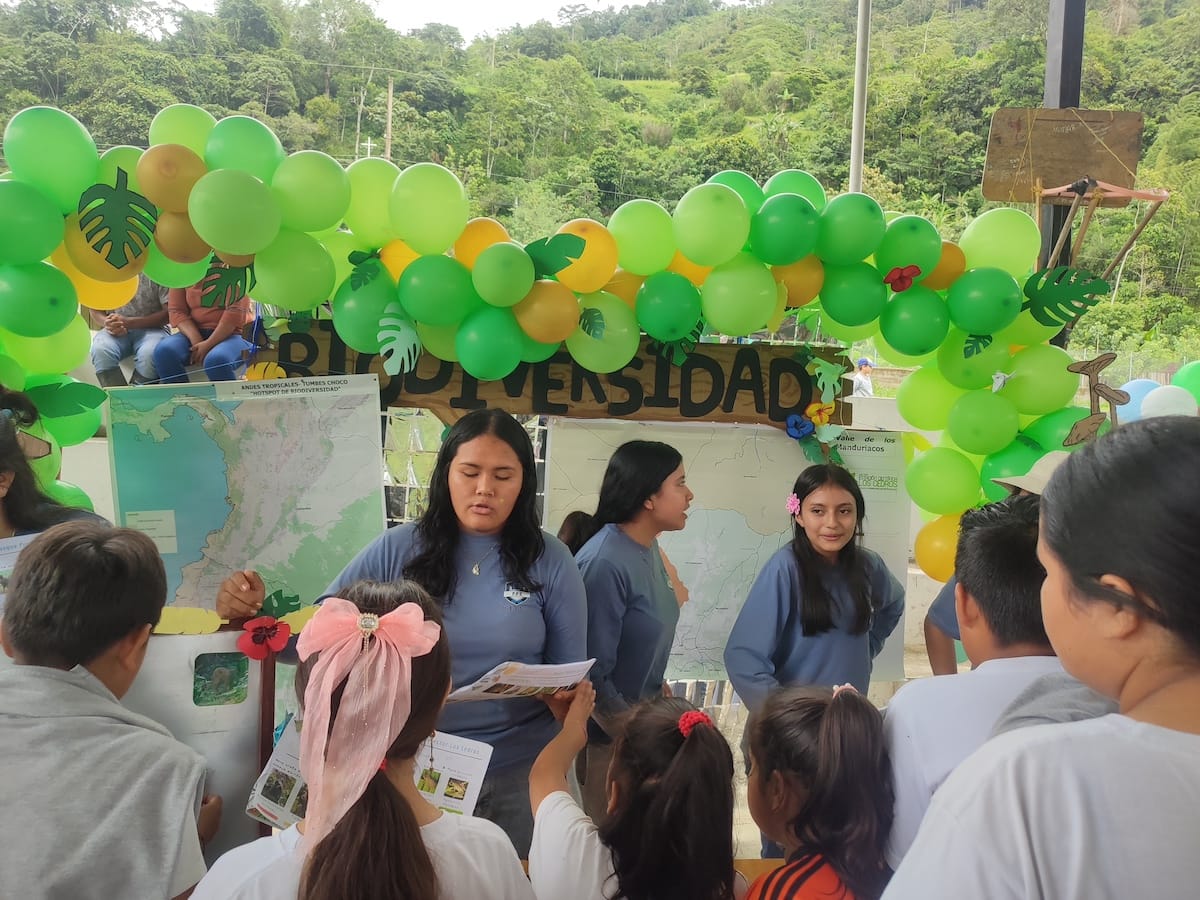
An Open House held by high school students for the entire school district.
As someone would introduce one friend to another, high school participants of the environmental education course connect their communities to Los Cedros through an Open House. It’s their turn to be the teachers. Now, they are eager to share the relationship they’ve formed with the cloud forest. During the Open House, the teenagers deepen their study of the topics covered, make models, invent games and devices that help them motivate those attending the Open House—children, other teenagers, teachers, and parents from the area’s entire school district—to see Los Cedros with the clarity and the depth that they now have.
Vital to this learning process, as with play, is the ability to work with and explore the spirituality the forest holds. We remember how to connect with the forest beyond the five senses we know. Imagination allows us to recover the planetary connection between humans and nature. Ancestral memory moves us to regain awareness of the living beings who inhabit and share this planet with other animal, plant, and fungal neighbors. We remember how to ask permission to enter the forest and how to give thanks for the experience when we say goodbye.
This experiential practice is foundational to transforming reality. In addition to scientific knowledge, we need love, commitment, respect, and spiritual connection to learn and grow in the ways most important to our cloud forest community.
And so we continue. We research, create, and deepen our understanding of the teachings essential to this great project, to the environmental education team—a community-based, experiential, loving, and supportive movement toward the conservation of our home, the Los Cedros Protected Forest.

Primary school students connecting with each other and the Los Cedros Protected Forest.
Related post
Within the framework of the Project “Preparing Civil Society for the Co-Management and conservation of the Los Cedros Protected Forest – KBA ECU 14” financed by the Critical Ecosystem Partnership Fund (CEPF), we held the introductory workshop on the Birds of the BPLC (KBA ECU14) and of Ecuador in March as part of the forest […]
Twenty community members from the Valle de Los Manduriacos, who are training to be forest rangers, participated in the territory and participatory mapping workshop held in March. The workshop consisted of two phases: the first focused on political mapping, led by José Cueva, a member of the CIPBAT team, and the second on social mapping […]
Representatives from the Los Cedros Forest communities visited Yunguilla to learn about sustainable development, organization, and collective hope. Author Jose Cueva
In February, the second phase of the Community Forest Ranger Training Program began, with 10 young adults from last year’s program joined by 10 new young adults from the communities surrounding the Los Cedros Protected Forest, including Brillasol, Magdalena Alto, Chontal, Magdalena Bajo, Pueblo Unido, Paraíso, Río Verde, Villaflora, and Cielo Verde. Each council received […]

